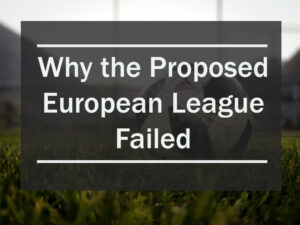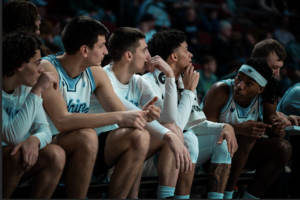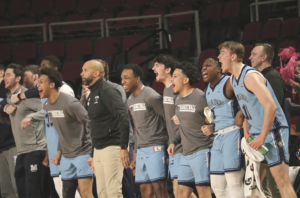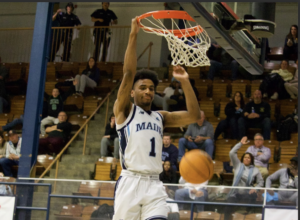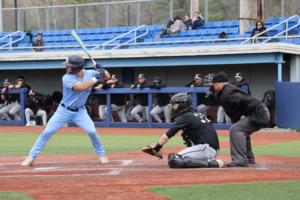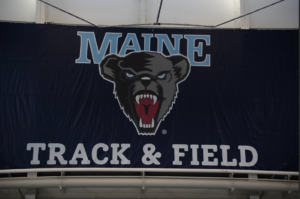Since taking to the national stage in the late 1980s, Nike Inc. has continued to expand its market by increasing the variety of products they make. Originally founded as Blue Ribbon Sports, a distribution company for the Japanese shoe maker Onitsuka Tiger, Nike has grown tremendously over its 55 years of existence.
As of 2019, Nike Inc. now provides the NFL with all of its official jerseys and the NBA with all of its official jerseys, along with creating articles of clothing for both athletic and regular activities. Their biggest mark however, is in the shoe industry. With stars such as the Golden State Warriors point guard Stephen Curry, Los Angeles Lakers small forward LeBron James, and retired NBA legend Michael Jordan all having their own shoe lines, Nike has taken over the sporting goods industry and helped to shape the culture shift in professional sports.
The origin of this transcendence comes with Jordan, who transformed the NBA and the way that companies snag endorsements from players. After being drafted third overall by the Chicago Bulls in 1985, Jordan signed a five-year endorsement deal worth $2.5 million with Nike. The move was shocking at the time, as Jordan had yet to prove himself at the professional level. Although he was an NCAA champion, taking the University of North Carolina Tar Heels all the way in the 1982 season, no other sporting goods company had sponsored an athlete in the NBA before they had even made their debut at the professional level.
Fast forward to 2019, and we see a similar scenario in motion. Duke University Blue Devils’ first-year phenom forward Zion Williamson has already amassed a larger social media following than current NBA stars such as the Boston Celtics’ forward Jayson Tatum, and currently has Nike negotiating a deal with him. The young talent who stands at 6-foot-7 and 284 pounds, with a 6-foot-10-inch wingspan at the age of 18 years old, is the purest specimen the league has seen since James was drafted in 2003.
As a result, Nike is jumping onto the hype train, hoping to sign a deal with Williamson to provide him with his own line of shoes before he can set foot on an NBA court, or even back on the NCAA court. However, what ensued created a less than favorable image for Nike’s potential partnership. On Feb. 20, Duke, nationally ranked as the top team in the nation, took on Jordan’s alma mater in a highly anticipated contest. Less than a minute in, Williamson drove to the free throw line and attempted to pivot to lose his defender and take the jump shot. In the midst of his pivot, Williamson planted his left foot, wearing a pair of Nike PG 2.5s, and drove his foot through the sole of the shoe. His socked foot slid on the hardwood, resulting in Williamson falling and sustaining a grade one knee sprain in his right leg. The home crowd went silent, watching the top NBA prospect in the nation clutching his knee in pain.
The Nike PG 2.5s, a part of their collection with Oklahoma City Thunder small forward Paul George, are described as “designed for the game’s most versatile players. It’s light yet strong, with a supportive strap and comfortable cushioning that responds to every fast, focused step,” on Nike’s website.
Williamson, who plays incredibly fast offense and defense, stands at a similar stature to George, who is 6-foot-9-inches, but weighs significantly more, with George weighing in at 220 pounds. This isn’t the first time a Nike shoe has exploded on a massive yet mobile player. Back in his days playing for the Miami Heat, James had a similar problem with his Nikes in a game against the Golden State Warriors in January of 2012. Driving to the hoop from beyond the arc, James blew out the sole of his right shoe and awkwardly fell forward due to his momentum. Luckily, James didn’t sustain a significant injury like Williamson did.
While the internet and the majority of social media have attacked Nike for the lack of quality produced in their line of shoes, especially for the game’s biggest stars, there are some additional factors to take into account. Williamson is, as mentioned previously, one of basketball’s larger players. Outside of James, few men at that size are able to move as quickly as Williamson, and Nike’s production engineers can only do so much with a shoe. In an attempt to make it grip the floor, be highly durable and highly flexible, footwear may only go so far before reaching a breaking point. In addition, the clear breakthrough on Williamson’s shoe was directly along where the sides attach to the sole, which will prompt Nike to look into improving that area of their products.
This whole debacle has caused quite the backlash, but there are clear winners from the ordeal. Williamson is a winner here, not simply because his knee injury was minimal, but because the potential for a more serious injury can be used to drive up his asking price when Nike potentially offers an endorsement deal for him. In addition, more minor shoe companies, such as Adidas, are now able to make a more serious offer to Williamson in an attempt to expand their markets. With Williamson injured by Nike shoes, many companies may look to bash the sporting goods titan for the sake of acquiring the basketball phenom.
Nike will go back to the drawing board, knowing they still control the professional sporting goods industry, and likely will accept Williamson’s demands in order to maintain their control for the future of the NBA and its shoe popularity. But players are only able to play if their shoes can hold out, and the scrutiny caused by this event may prompt players to take a closer look at the heart and sole of the hardwood.


